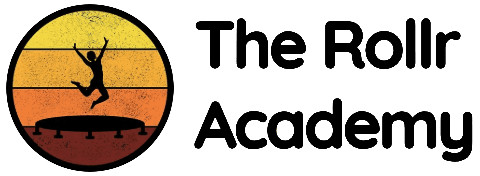Understanding Rhotacism in Autism
Rhotacism appears more frequently in individuals with autism spectrum disorders (ASD) than in the general population. This connection relates to the complex motor planning, sensory processing, and language development differences often present in autism.
Research indicates that speech sound difficulties, including rhotacism, occur in approximately 70-85% of children with autism, compared to about 5-10% of neurotypical children. The R sound, being one of the most complex sounds to produce, presents particular challenges for many individuals on the autism spectrum.
Key Statistics:
- 70-85% of children with autism experience speech sound difficulties
- R sound problems are among the most persistent speech challenges in autism
- Motor planning differences in autism can specifically affect R sound coordination
- Sensory sensitivities may impact speech sound learning and production
Why Rhotacism is More Common in Autism
Several factors contribute to the higher prevalence of rhotacism in autism spectrum disorders:
Motor Planning and Coordination:
- Difficulty with complex motor sequences needed for R sound production
- Challenges coordinating tongue, lips, and breath support simultaneously
- Apraxia of speech, which commonly co-occurs with autism
Sensory Processing Differences:
- Altered sensory feedback affecting awareness of tongue position
- Difficulty processing auditory feedback for speech sound accuracy
- Tactile sensitivities that may affect speech therapy techniques
Language Development Patterns:
- Later onset of speech development delaying R sound acquisition
- Focus on language content over speech sound accuracy
- Different learning styles requiring adapted teaching approaches
Attention and Focus Factors:
- Special interests that may not include speech practice
- Challenges sustaining attention during traditional speech therapy
- Need for highly structured, predictable intervention approaches
Autism-Specific Considerations for Rhotacism Treatment
Treating rhotacism in individuals with autism requires specialized approaches that account for autism-related strengths and challenges:
Leveraging Autism Strengths:
- Using visual supports and structured routines in speech practice
- Incorporating special interests into therapy activities
- Taking advantage of attention to detail and pattern recognition
- Building on systematic thinking and rule-based learning
Addressing Autism Challenges:
- Providing sensory-friendly therapy environments
- Using clear, concrete instructions and expectations
- Allowing for processing time and movement breaks
- Incorporating preferred activities and reinforcement systems
Effective Treatment Strategies
Successful rhotacism intervention for individuals with autism often requires modified approaches:
Multisensory Techniques:
- Visual cues and mirror work for tongue positioning
- Tactile prompts adapted to sensory preferences
- Technology-based feedback systems
- Movement integration to support motor planning
Structured Learning Approaches:
- Breaking down R sound production into specific steps
- Using consistent routines and predictable practice sessions
- Visual schedules and progress tracking systems
- Clear beginning, middle, and end to each therapy session
Technology Integration:
- Speech analysis apps that provide immediate visual feedback
- Interactive games that incorporate R sound practice
- Video modeling and self-monitoring tools
- Customizable practice programs that adapt to individual needs
Family and Team Collaboration:
- Training family members in supportive practice techniques
- Coordinating with other therapists and educators
- Integrating speech goals into daily routines and activities
- Regular communication and progress monitoring
Supporting Families
Families play a crucial role in supporting individuals with autism who have rhotacism:
Home Practice Strategies:
- Creating consistent, low-pressure practice opportunities
- Using preferred activities and interests to motivate practice
- Celebrating small improvements and effort
- Maintaining realistic expectations and timelines
Environmental Modifications:
- Reducing background noise during practice times
- Ensuring adequate lighting for visual cues
- Providing comfortable seating and positioning
- Having necessary materials organized and accessible
Communication Support:
- Using alternative communication methods when needed
- Focusing on overall communication effectiveness
- Building confidence through positive interactions
- Advocating for appropriate services and support
Important Reminder for Families:
Progress with rhotacism in autism may look different from neurotypical development patterns. Success should be measured by individual improvement and enhanced communication confidence, not comparison to typical timelines.
Long-term Outcomes and Expectations
With appropriate support and intervention, individuals with autism can make significant improvements in R sound production:
Realistic Expectations:
- Progress may be slower but can be substantial with consistent support
- Some individuals may achieve complete R sound mastery
- Others may improve significantly while maintaining some differences
- Focus should remain on functional communication and confidence
Factors Supporting Success:
- Early identification and intervention
- Consistent, autism-informed therapy approaches
- Strong family and educational team support
- Individual motivation and engagement in the process
Beyond R Sound Production:
- Improved overall speech clarity and intelligibility
- Increased confidence in communication situations
- Enhanced social interaction opportunities
- Greater independence in daily communication needs
Seeking Support for Rhotacism and Autism?
Our assessment can help identify specific R sound patterns and provide personalized recommendations for individuals with autism.
Professional Resources and Support
Finding qualified professionals who understand both rhotacism and autism is essential for effective intervention:
Look for professionals with:
- Experience working with individuals on the autism spectrum
- Specialized training in articulation disorders and rhotacism
- Understanding of sensory processing and motor planning differences
- Collaborative approach with families and other team members
Types of support that may be helpful:
- Speech-language pathologists with autism expertise
- Occupational therapists for sensory and motor support
- Technology specialists for assistive communication tools
- Family support groups and autism organizations
Remember that addressing rhotacism in autism is a team effort. With understanding, patience, and appropriate support, individuals with autism can achieve meaningful improvements in R sound production and overall communication confidence.

